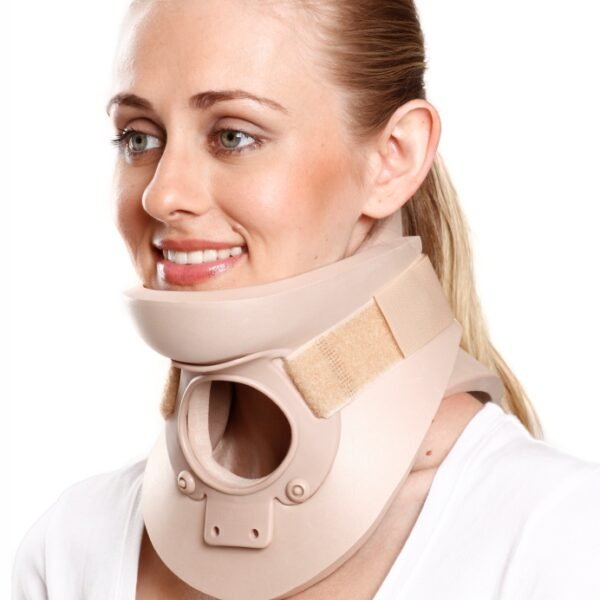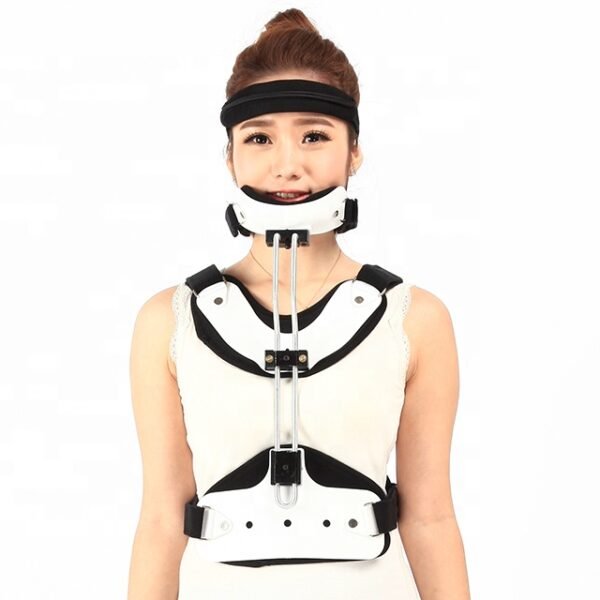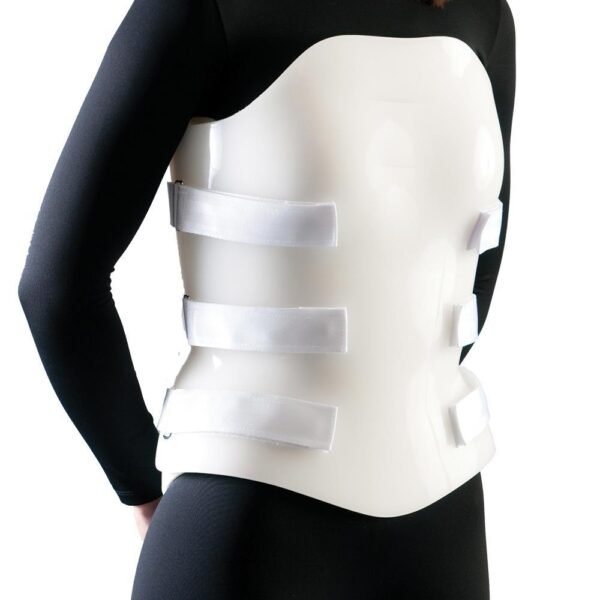
Cervical Orthosis
Cervical orthosis are commonly used by patients who have had a surgical intervention of the cervical spine, to immobilise the neck. It is also used for the treatment of neck pain, caused by acute trauma or chronic pain.

Cervical orthosis are commonly used by patients who have had a surgical intervention of the cervical spine, to immobilise the neck. It is also used for the treatment of neck pain, caused by acute trauma or chronic pain.

Cervicothoracic Orthosis provides control of flexion, extension, lateral bending, and rotation of the cervical spine. Pressure systems are used for control of motion, as well as to provide slight distraction for immobilization of the spine. This orthosis are prescribed for patients who are restricted to bed, because there are no posterior rods to interfere with comfort of the patient. A headband can be added so that the chin piece can be removed. This maintains stability but improves accessibility for daily hygiene and eating.

Thoracolumbosacral Orthoses provides control of flexion, extension, lateral bending, and rotation using three-point pressure systems and circumferential compression. Design and Fabrication: designed in modular forms, with anterior and posterior sections connected by padded lateral panels and fastened with Velcro straps or pulley systems. Many of these are covered in breathable fabric and have a variety of different shapes and options, such as sternal pads or shoulder straps. TLSO ae prescribed for traumatic or pathologic spinal fractures in the mid to lower thoracic region or lumbar region

Lumbosacral Orthoses provides limitation of flexion, extension, and lateral flexion. It also provides elevation of intraabdominal pressure. This orthosis has a pelvic band that lies posteriorly and extends laterally to just anterior to the midsagittal line. Indications degenerative disk disease, herniated disk, spondylolisthesis, and mechanical low back pain, and for postsurgical supports for lumbar laminectomies, fusions, or diskectomies